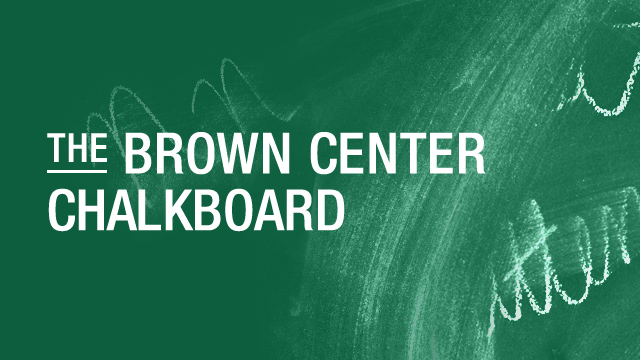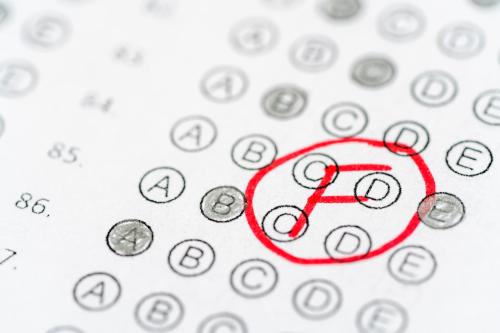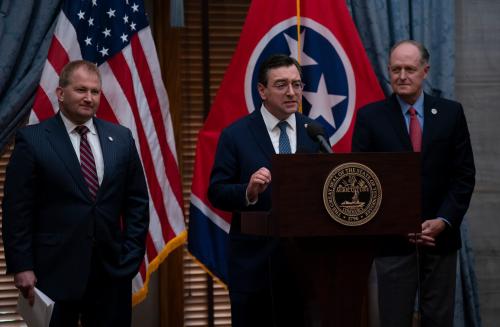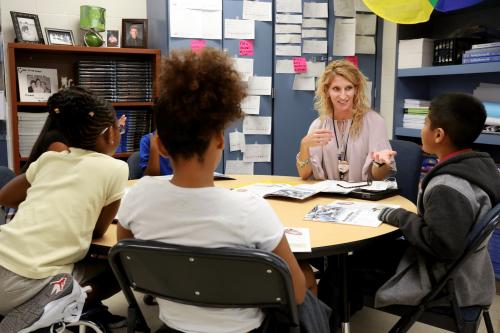America is seeing a surge in private school voucher programs. In the last year, state legislatures in Texas and Tennessee passed voucher legislation, while the U.S. Congress passed a nationwide tax credit scholarship program. Vouchers are often framed as innovative, civil rights-oriented reforms that empower parents, but their origins and outcomes tell a different story.
We recently published an examination of 150 years of voucher legislation in the United States. Rather than fostering competitive education markets and creating valuable new opportunities, we see that vouchers have frequently exacerbated inequality, excluded vulnerable student groups, and redirected public resources to private entities.
Recognizing this historical context is crucial for policymakers evaluating the future of vouchers. Here, we describe what we see as three waves of voucher reforms—and their implications for the voucher reforms of today.
The first wave: Segregation academies
The first wave of vouchers was not about choice but rather preserving racial segregation. The voucher movement began in the wake of Brown v. Board of Education (1954), when Southern states resisted school desegregation. North Carolina, Alabama, Virginia, Georgia, Louisiana, South Carolina, and Mississippi enacted “state tuition grants” that allowed white families to use public funds to attend private schools—often called segregation academies—that refused to admit Black students. These early voucher programs had an explicit purpose: To preserve racial segregation. Terms like “freedom of choice” and “school vouchers,” rooted in the work of Milton Friedman, were used to legitimize policies that excluded Black families.
Prince Edward County, Virginia, stands as one of the most harmful and intentionally defiant cases of states adopting vouchers to maintain racial segregation. In 1959, the Prince Edward County Board of Supervisors closed the school district by eliminating all funding for public schools rather than complying with federal desegregation orders. Earlier that year, the Virginia General Assembly had expanded a state tuition grant program, offering families $125 (elementary school) or $150 (high school) in state funds to attend private schools or public schools in other districts. These vouchers overwhelmingly benefited white families, while many Black students were left without formal education. The public schools remained closed for five years, reopening only after the U.S. Supreme Court’s decision in Griffin v. County School Board (1964) declared the closures and state tuition grants unconstitutional.
Other Southern states adopted voucher policies that led to a rapid increase in private school enrollment. In 1971, The New York Times reported that segregation academies continued to expand, with nearly 700 all-white private schools established across 11 states in the prior half-decade (enrolling about 500,000 students). Segregationists were unapologetic in their efforts to use vouchers and private schooling to maintain segregation. For example, in 1969, Time reported on Marvel Academy, a private elementary school that opened in Marvel, Arkansas. Members of the community’s white Citizens’ Council declared, “Integration is the corruption of the true American heritage by alien concept and ideology.”
Voucher rhetoric was masking policies that were entrenching racial inequality.
The second wave: Sanitizing and reframing vouchers
In Runyon v. McCrary (1976), the U.S. Supreme Court held that private schools cannot deny admission based on race and that this restriction does not infringe on parents’ rights to direct their children’s education. The Court explained that “racial discrimination practiced by petitioner schools amounts to a class violation of §1981,” a key provision of the Civil Rights Act of 1866. The ruling established that any private school receiving public funds must comply with civil rights laws. This suggested that voucher programs, and the broader private school sector, would need to make some type of pivot.
Research from scholars such as John Chubb and Terry Moe in the 1980s and 1990s helped to lay a slightly different intellectual foundation for a second wave of vouchers. They argued that public schools were hindered by bureaucracy and politics, and they presented data to support their claim that public schools were underperforming private schools academically (using methods challenged by other researchers).
In 1990, the Milwaukee Parental Choice Program (MPCP) became the first large-scale initiative to provide public funds to low-income students to attend private schools in this new era. Early evaluations were mixed, yet MPCP grew rapidly. Initially capped at 1% of Milwaukee Public Schools’ enrollment, it would soon grow much larger than that. Several other cities followed Milwaukee’s lead, with some creating programs that were privately funded and less subject to scrutiny (e.g., the Washington Scholarship Fund in Washington, D.C., and Parents Advancing Choice in Education Nonprofit in Dayton, Ohio).
The uneven and fragmented evidence base underscored how policy decisions outpaced research, as programs expanded despite unanswered questions about effectiveness. Moreover, many of the private schools that received these funds were allowed to select students, exclude students with disabilities, and disregard public accountability standards.
The third wave: Rapid expansion and a push into religious schools
The third wave of vouchers began in the early 2000s, catalyzed by U.S. Supreme Court decisions that weakened church-state barriers. In Zelman v. Simmons-Harris (2002), the Court upheld a voucher program that included religious schools. Cases such as Espinoza v. Montana Department of Revenue (2020) and Carson v. Makin (2022) further expanded the legal foundation for vouchers to fund religious private schools.
During the third wave, some states adopted larger voucher programs with minimal oversight and fewer income restrictions relative to earlier iterations. Programs in Indiana, Louisiana, Ohio, and Washington, DC expanded even as studies showed voucher recipients had significant declines in test scores. More recently, some states have moved toward universal vouchers that are available to nearly all students. In 2022, Arizona made every K-12 student eligible for a voucher. Enrollment surged from about 12,000 students in 2021 to over 93,000 students by 2025, with projected costs exceeding $900 million annually. In 2023, Florida eliminated income and enrollment caps for its voucher programs, with an expected annual cost of $4 billion.
Some view these universal programs as a fourth wave, but they build on the strategies of the third wave, with many of the same advocacy groups behind them. These efforts have reached the federal level, too. Earlier this year, as part of the One Big Beautiful Bill Act, President Trump signed into law a tax-credit scholarship with little protection against discrimination and income limits so high that the vast majority of families are income-eligible.
Learning lessons from history
From segregation-era state tuition grants to universal vouchers, the expansion of these programs has reflected ideological commitments more than empirical results. The first wave used the language of choice and markets to avoid racial integration. The second wave invoked markets as a tool to improve outcomes for low-income students in urban contexts, but it expanded with limited evidence while allowing private schools to exclude students with disabilities. The third wave leveraged judicial decisions and conservative political support to encourage rapid voucher expansion.
There is plenty of opportunity for voucher advocates to address some of the problems with these policies. For instance, stronger antidiscrimination rules could require private schools to admit students of all backgrounds. Larger vouchers for low-income students might encourage greater private school access. Skeptical as we may be, we hope policymakers can learn from our past and prioritize education policies that are transparent, rooted in sound research, and designed to serve all students.
The Brookings Institution is committed to quality, independence, and impact.
We are supported by a diverse array of funders. In line with our values and policies, each Brookings publication represents the sole views of its author(s).






Commentary
3 waves of school vouchers: A history of expansion and exclusion
October 21, 2025